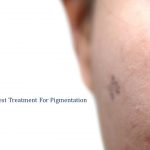Skin moles are common occurrences for many individuals, often appearing during childhood or young adulthood. While most moles are harmless, it is crucial to be aware of potential signs indicating a deeper health concern. Skin cancer is a matter that should not be overlooked, and being able to identify the warning signs linked to moles can significantly impact early detection and treatment.
This article provides insights into the identification of potential signs of skin cancer, emphasizing the importance of timely intervention and seeking professional advice. Additionally, the article discusses essential considerations for individuals seeking mole removal in Singapore, including associated costs and choosing a suitable surgeon.
Understanding the Importance of Mole Evaluation:
Regularly monitoring moles on the skin is essential for identifying any changes in size, color, or shape. While most moles are harmless, certain alterations could indicate the development of skin cancer. Doctors often emphasize the ABCDEs of mole evaluation, focusing on asymmetry, border irregularity, color variations, diameter changes, and evolving characteristics.
Any noticeable deviations from these parameters warrant immediate attention, as they could signify the presence of melanoma or other types of skin cancer. Additionally, individuals with a family history of skin cancer or those who have experienced excessive sun exposure should be particularly vigilant in monitoring their moles.
Understanding the ABCDE Rule
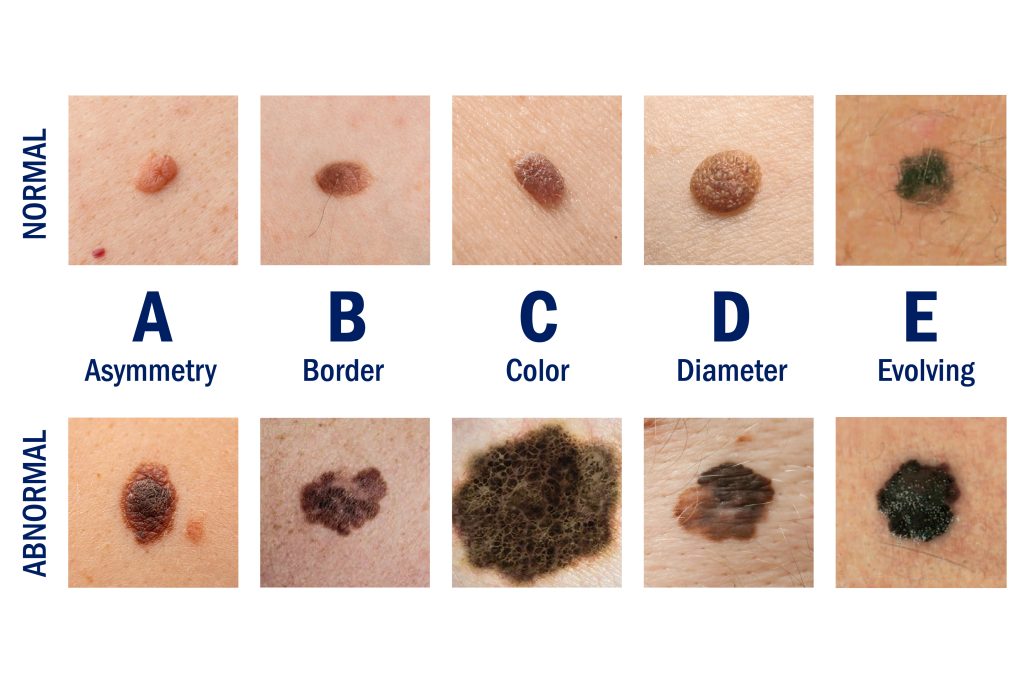
1. A – Asymmetry:
Generally, moles are symmetrical, meaning if a line were to be drawn through the middle, the two halves would be roughly the same. Asymmetrical moles, where one half looks different from the other half, could indicate the need for further examination.
2. B – Border Irregularity:
Moles with irregular, jagged, or blurred borders can potentially be a red flag. If the edges of the mole appear to be uneven or notched, it’s advisable to consult a doctor for a professional evaluation.
3. C – Colour Changes:
Pay attention to any changes in the color of a mole. Darkening, or the presence of multiple colors within a single mole can signal the need for closer observation. Mole colors that range from shades of brown to black, with areas of red, white, or blue, should not be ignored.
4. D – Diameter:
While moles can vary in size, it’s recommended to be cautious of moles larger than a pencil eraser, roughly 6mm in diameter. Any significant increase in size could be a cause for concern and should be discussed with a medical professional.
5. E – Evolving:
Keep a watchful eye on any changes in the mole’s size, shape, color, or texture. Additionally, any unusual symptoms like itching, bleeding, or crusting should not be disregarded. It is imperative to seek medical advice promptly if any of these changes occur.
Recognizing Warning Signs of Skin Cancer:
-
Changes in Shape and Size:
When a mole changes shape, becoming irregular or asymmetric, it can be a potential indicator of skin cancer. Additionally, any significant increase in size over a relatively short period warrants immediate evaluation by a board-certified plastic surgeon in Singapore.
-
Color Changes:
While most moles have a consistent color, the appearance of new shades within a mole, such as black, blue, or red, should raise concerns. Varied colors within a single mole may signal an underlying issue that requires professional examination.
-
Irregular Borders:
Moles with uneven or blurred borders could be indicative of malignant developments. Regularly inspecting the borders of moles can aid in the early detection of any potential abnormalities.
-
Itching, Bleeding, or Crusting:
Moles that exhibit unusual symptoms like itching, bleeding, or crusting should not be ignored. Such symptoms often indicate potential malignancy and necessitate immediate medical attention.
-
Rapid Changes or Evolution:
Moles that undergo rapid changes in a short period, such as weeks or months, could be a cause for concern. Keeping track of any evolving characteristics in moles is vital for timely intervention.
Mole Removal Procedure
Mole removal is a common procedure that can be conducted for various reasons, including cosmetic purposes or to prevent potential health risks. When considering mole removal, it is crucial to consult a certified doctor who can provide comprehensive guidance and assistance throughout the process.
In Singapore, consult dermatologists, or plastic surgeons address individuals’ concerns regarding mole removal. Understanding the procedure, recovery time, and necessary precautions, post-surgery is vital for a successful outcome.
The cost of mole removal in Singapore can vary depending on factors such as the complexity of the procedure, the size of the mole, and the chosen method. Generally, prices may range from $100 – $800, reflecting the expertise of the doctor, and the specific technique used.
How is it removed?
Moles can be removed through various techniques, depending on their size, location, and whether they are suspected to be cancerous. Common methods include:
Surgical Excision:
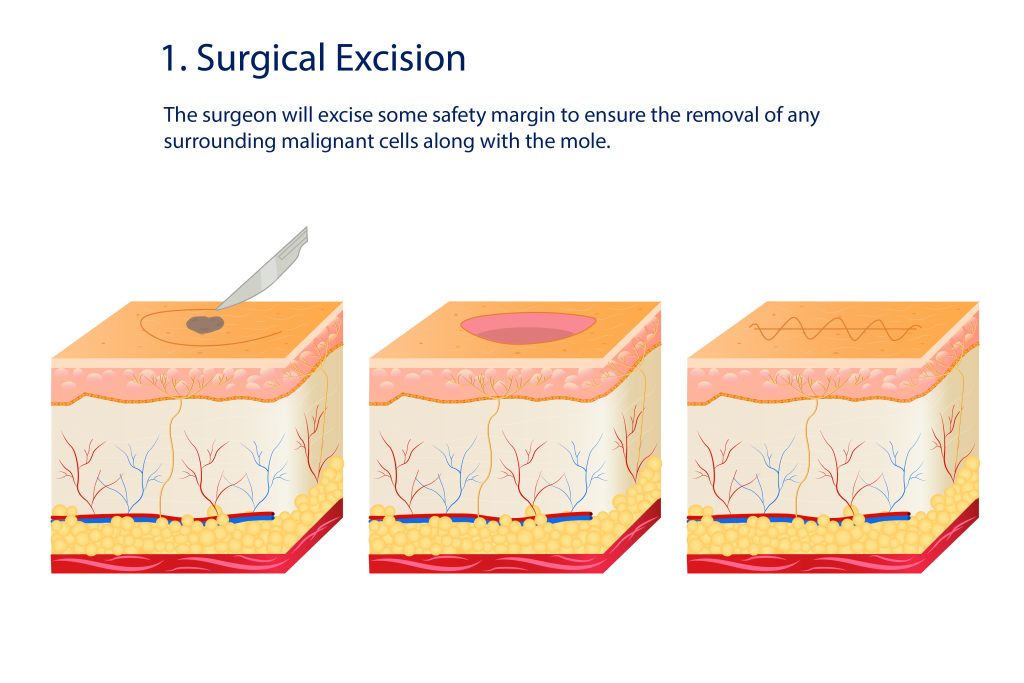
This process involves cutting out the entire mole and a surrounding margin of healthy skin. The area is then stitched closed to facilitate healing.
Shave Excision:
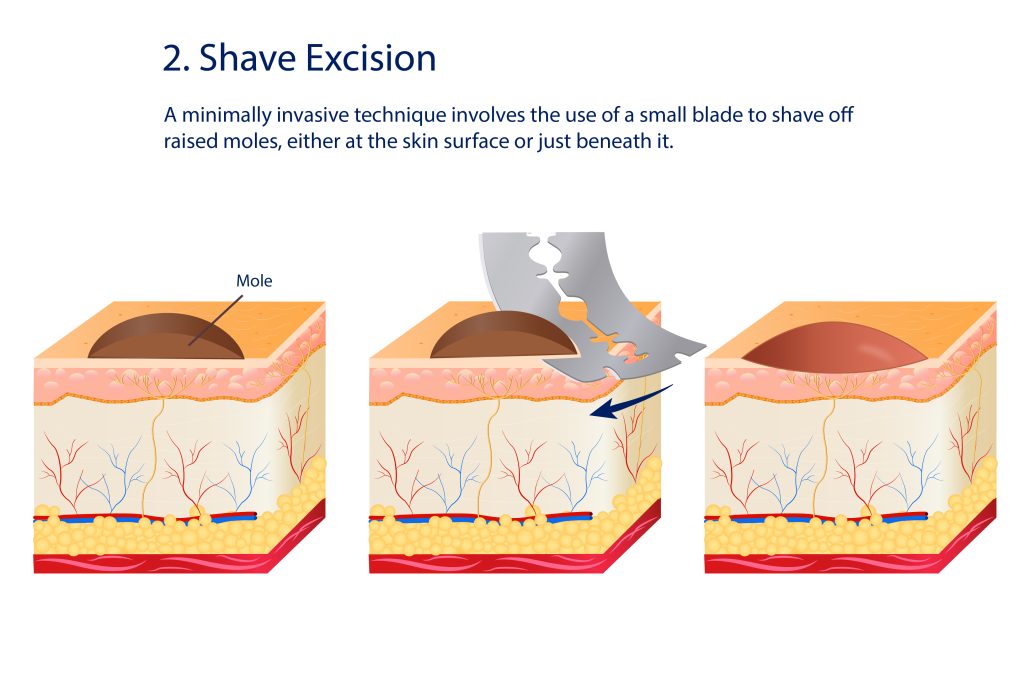
This technique is suitable for protruding moles. The surgeon uses a small blade to shave off the mole, leaving the area to heal naturally.
Laser Removal:
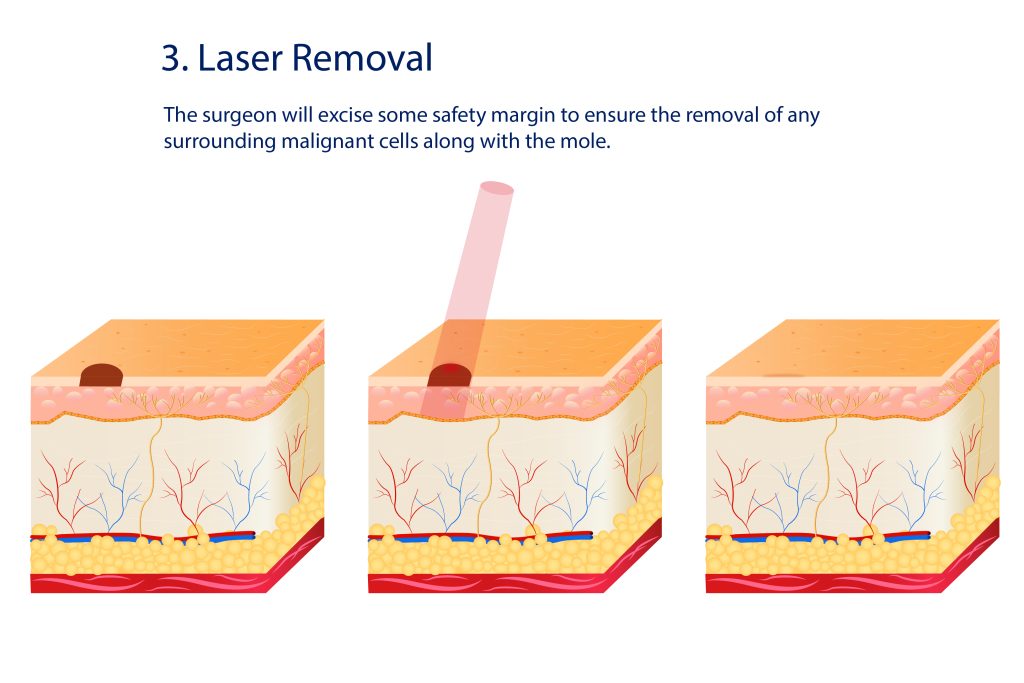
Some moles can be treated with laser therapy, where focused light is used to break down the mole’s pigment. This method is often preferred for smaller and non-cancerous moles.
Freezing (Cryotherapy):
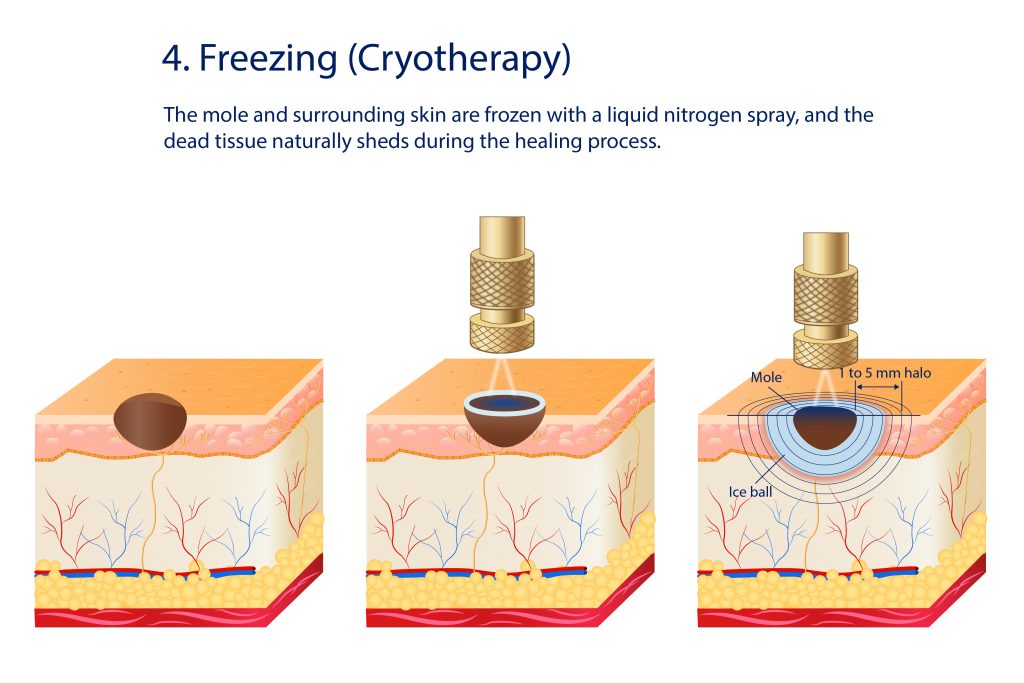
Cryotherapy involves freezing the mole with liquid nitrogen, causing it to fall off over time.
The choice of the method depends on the specific characteristics of the mole and the patient’s preferences, which should be discussed thoroughly with the plastic surgeon before the procedure.
Recovery Time and Precautions
After the mole removal procedure, it is crucial to follow the post-operative care instructions provided by the plastic surgeon. The recovery period may vary depending on the method used for removal and the size of the mole.
In general, the recovery time can range from a few days to a couple of weeks. During this period, it is essential to:
- Keep the treated area clean and dry to prevent infection.
- Avoid exposing the area to direct sunlight and wear sunscreen to protect the skin from harmful UV rays.
- Refrain from picking at scabs or interfering with the healing process.
- Follow any additional instructions provided by the plastic surgeon for optimal recovery.
It is advisable to schedule a follow-up appointment with the plastic surgeon to ensure that the healing process is progressing smoothly and to address any concerns or complications that may arise.
When to Visit a Doctor
While some moles are harmless and may not require medical intervention, it is essential to consult a doctor or a certified plastic surgeon in the following circumstances:
1. If a mole exhibits any of the warning signs mentioned in the ABCDE rule, such as asymmetry, irregular borders, color changes, increased diameter, or evolving characteristics.
2. If a mole causes discomfort, such as pain, itching, or bleeding.
3. If there is uncertainty about the nature of the mole and its potential risks.
Timely medical intervention can significantly contribute to the early detection and treatment of any underlying health concerns associated with abnormal moles.
Choosing a Suitable Surgeon in Singapore:
When considering mole removal in Singapore, selecting a suitable plastic surgeon is paramount. Patients should prioritize surgeons with extensive experience in dermatological procedures and a track record of successful outcomes. Researching patient reviews, seeking referrals from trusted sources, and scheduling consultations with multiple surgeons can help individuals make informed decisions.
Additionally, discussing the potential risks, benefits, and post-procedural care with the chosen surgeon is essential for establishing realistic expectations and ensuring a smooth recovery process.
Bottomline
Monitoring moles regularly and being attentive to any changes is crucial for the early detection of skin cancer. Recognizing warning signs, such as changes in shape, color, or size, can prompt timely medical intervention, increasing the likelihood of successful treatment.
For individuals in Singapore considering mole removal, understanding the process, associated costs, and the significance of choosing a suitable plastic surgeon are essential steps in ensuring a safe and effective procedure. Regular self-examination and awareness of risk factors are key to maintaining healthy skin. Remember, if in doubt, it’s always best to seek medical advice.


